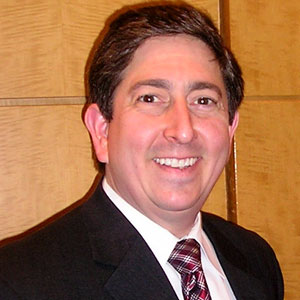
There is a difference between campaigning and governing. Running for office is about putting out bold ideas and galvanizing a base of supporters who are energized by the opportunity for real change. It’s exhilarating and fluid. The momentum can be like a rock concert, and people are carried away with excitement about the future.
But once a candidate wins an election, putting those themes into practice can be a little more difficult and the minutia of implementing public policy is far more difficult. Followers demand immediate action and have little enthusiasm for the protocol of procedure. Supporters expect the candidate to remain the same, but the environment—and many of the rules—have changed once elected. Nowhere is this more evident than the quadrennial presidential election.
The Process of Presidential Appointments
The U.S. president has approximately 4,000 political appointees at his discretion. About 1,000 of those require confirmation from the Senate. Most of these are not reported outside of the Washington, DC, political structure but are essential in making and implementing regulatory policy. Health care tops this list.
After careful vetting and often some public trial balloons, names are presented to the Senate. For high-level appointments, the dance of confirmation begins with a press conference to announce the nominee, who makes brief comments and then sets up meetings with senators to speak privately about policy issues. Eventually, formal hearings are held that can either conclude with bipartisan support or become fodder for political mayhem, ending in the withdrawal of the nominee against perceived negative publicity.
Regardless, very important slots must be filled and it is incumbent on the new administration to spend the early days appointing Cabinet secretaries and a cadre of deputy, under, and assistant secretaries, commissioners, and administrators to complete the work of government.
Notable Health Policy Appointments
One of the most public federal agencies, with broad authority over large policy domains, is the Department of Health and Human Services and its many subdivisions. Former U.S. Representative Tom Price (R-GA), a physician by training, was confirmed in February as secretary. The secretary is the point person for the entire department, and the ideologic interpretations of the presidential administration will flow from that office to the directed agencies. Other notable Department of Health and Human Services subdivisions and their associated or predicted appointments include the following:
- Centers for Disease Control and Prevention (CDC): protects America from health, safety, and security threats, both foreign and domestic. Whether diseases start at home or abroad, are chronic or acute, curable or preventable, human error or deliberate attack, CDC fights disease and supports communities and citizens to do the same. Anne Schuchat, MD (RADM, USPHS), is the CDC acting director. She was principal deputy director of CDC during 2015–2017 and director of CDC’s National Center for Immunization and Respiratory Diseases from 2006–2015.
- Centers for Medicare and Medicaid Services (CMS): through Medicare, Medicaid, the Children’s Health Insurance Program, and the Health Insurance Marketplace, CMS seeks to achieve a high-quality healthcare system, for better care at lower costs and improved health. At the time of publication, CMS’s newly nominated administrator, Seema Verma, is in the process of confirmation hearings but has been confirmed by the Senate.
- National Institutes of Health (NIH): seeks fundamental knowledge about the nature and behavior of living systems and the application of that knowledge to enhance health, lengthen life, and reduce illness and disability. NIH Director Francis Collins has agreed to remain in place indefinitely.
- U.S. Food and Drug Administration (FDA): protects the public health by ensuring the safety, effectiveness, quality, and security of human and veterinary drugs, vaccines and other biologic products, medical devices, cosmetics, and dietary supplements and products that give off radiation. The president nominated Scott Gottlieb as the next FDA commissioner.
- Health Resources and Services Administration (HRSA): improves health equity through access to quality services, a skilled health workforce and innovative programs to people who are geographically isolated, economically or medically vulnerable. James Macrae is the HRSA acting administrator, and top directors will continue to implement the policies pending a selected nominee.
Elections matter, and how a presidential administration enacts law has real consequences. The workings of government are simultaneously complex and straightforward. Participatory democracy requires the consent of the governed, but it also demands that those same people be engaged in the process: not just during the election, but throughout the entire term of office.
ONS is on the front lines of advocacy. Our members are testifying before Congress, meeting with their elected officials, writing policy alternatives to clarify information about healthcare issues for patients with cancer, and tracking legislation that is important to nurses. Like a beacon in the night, ONS is a guiding light in public policy.






